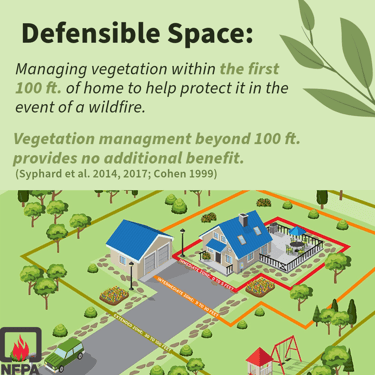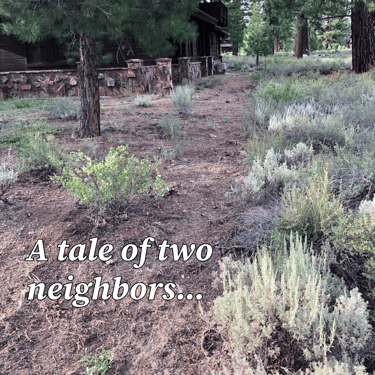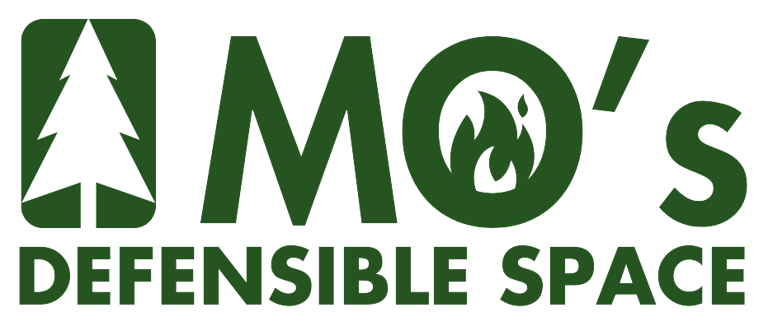What is Defensible Space?
Dive into the reasoning behind defensible space, and why it is so important to have if you live in a wildfire prone area.
1/21/20252 min read


Defensible space is an area around a structure where vegetation has been modified to increase the chance of the structure surviving a wildfire. Generally, it is fuels treatment around homes and buildings. Creating defensible space reduces the chance of structure ignition by eliminating direct flame contact, reducing radiant heat, and lowering the likelihood of ignition by embers.
Studies show that defensible space is most effective when performed in the home ignition zone, or within 100 ft. of the structure. There is little to no evidence that treating fuels beyond 100 ft. of a structure plays any factor in the survivability of that structure in a wildland fire. This is mainly because up to 90% of home ignitions in a wildfire are caused by embers.
Wildfires, like a campfire, produce embers or firebrands. These burning embers can land miles ahead of the body of a wildfire. When they land in receptive fuel beds, like dry, fallen pine needles or leaves, they can ignite and start a spot fire. Sometimes they will land on a roof or in a gutter where dry pine needles and leaves have accumulated. Without defensible space, small, seemingly harmless embers can become spot fires that easily find their way to a structure.
Vegetation is not the only fuel that can lead spot fires to a structure, “residential fuels” can also play a role in home/structure ignitions. Planter boxes, doormats, patio furniture cushions, and petroleum-based products - like kayaks, tires, and storage containers, can all lead fire to a structure. Fire will find the void spaces and vulnerabilities in a structure, preheating unenclosed eaves and slowly lighting the plastic seal on your front door on fire. Through windows, vents, siding fire can enter the home and destroy it.
Creating defensible space eliminates pathways for fires to reach the home and reduces embers’ ability to ignite on your property. Defensible space is most effective when it adheres to the spacing and treatment recommendations of the home ignition zone. This approach begins with the structure and works out.
Zone 0 is 0-5 ft. from the structure, or the non-combustible zone. Maintain a 5-foot perimeter around your home clear of vegetative fuel and residential fuel. Zone 1 is 5-30 ft. from the structure, or the lean, clean, and green zone. Zone 2 is 30-100 ft. from the structure, or the reduced fuel zone. Zone 0 is the most important zone to maintain! It is also typically the easiest and most cost-effective zone to maintain.






